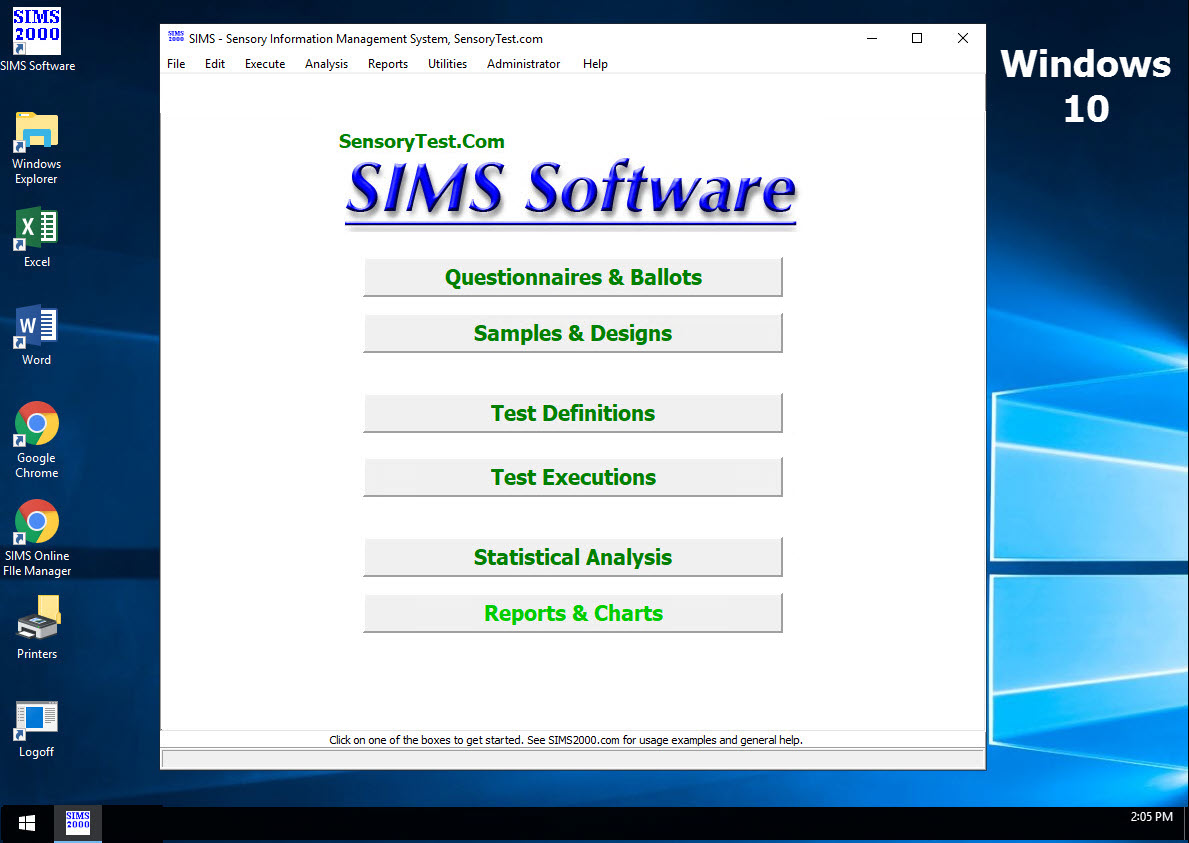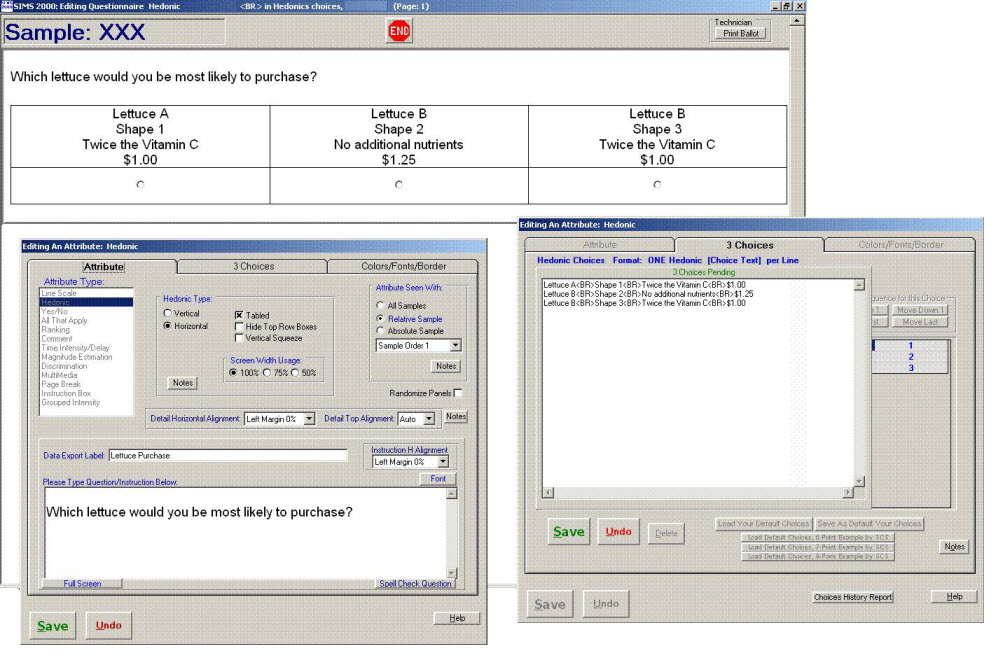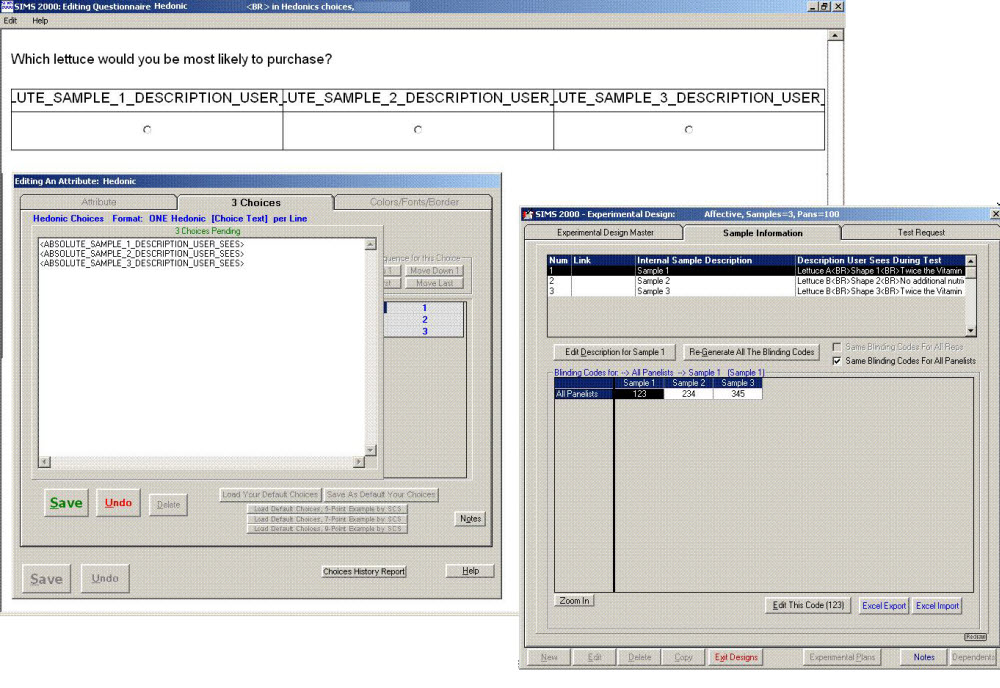
 HOME
HOME CONTACT
CONTACT SUPPORT
SUPPORT SENSORYTEST.COM
SENSORYTEST.COM |
 HOME HOME CONTACT CONTACT SUPPORT SUPPORT SENSORYTEST.COM SENSORYTEST.COM |
|
Sensory testing professional's favorite virtual desktop. Say hello to SIMS Cloud Systems. From any device, any laptop, any iPad and even your cell phone. Log in from anywhere anytime. Inquire today. 
|
Mobile devices real test example Point your cell phone camera Easy for your respondents 
Link |
 VIEW REPORTS
VIEW REPORTS |
 QUESTION CHOICES
QUESTION CHOICES |
 TEST CHOICES
TEST CHOICES |
| MULTIPLE FACTOR CONCEPT TESTING |
View Hedonic & Category Examples View Line Scale Examples View More Question Type Choices |

SIMS software ballot transferrable file: MultiFact.Demo.Que.SQL For Hedonics attributes, set up multi-line choices for either Horizontal (recommended) or vertical presentation as shown above. For All That Apply attributes, set up multi-line choices for normal & matrix layouts. Usage Tag <BR> is short for line BReak and is the syntax commonly used throughout the web. Conjoint analysis is a popular marketing research technique that marketers sometimes use to determine what features a new product should have and how it should be priced. Conjoint analysis is another group of quantitative consumer tests similar to PCA that can be used to probe consumer perceptions. The goal is determination of which product attribute(s) are most important. Multiple techniques include Adaptive Conjoint Analysis (ACA), Choice Based Conjoint Analysis (CBC), and others. SIMS does not currently automate Conjoint statistical reporting, we recommend start by exporting raw data to SAS, JMP, Camo, etc. Google: SAS Institute 'Conjoint Analysis Examples' for their 92 page SAS Technical Report R-l 09 Conjoint Analysis Examples. http://support.sas.com/documentation/onlinedoc/v82/techreport_r109.pdf Various statistical techniques are discussed in the SAS document including Metric conjoint analysis and Nonmetric conjoint analysis. (The Scales on this Web page are not interactive.) Two strategic ideas for your experimental design set up in SIMS: Example, 30 possible concepts combinations. 1) 1C1R1 with 10 Hedonic Attributes 3 choices each. Simple 1 sample design. Apply the 30 unique descriptions right into the hedonic choices. 
2) 30C1R1, with 10 Hedonic Attributes 3 choices each. 30 sample design. Apply the 30 unique descriptions into the 30 sample descriptions user sees. 
|
